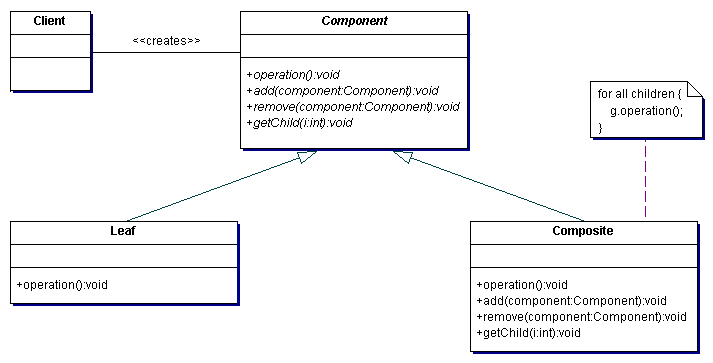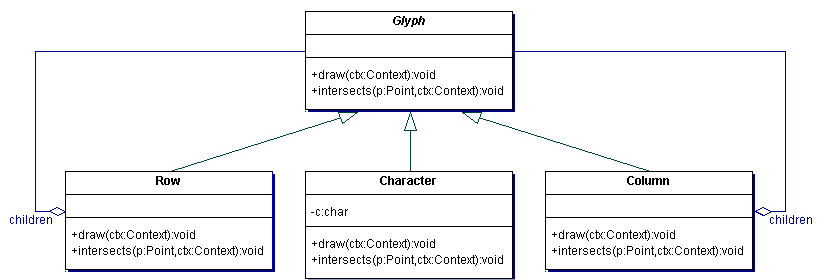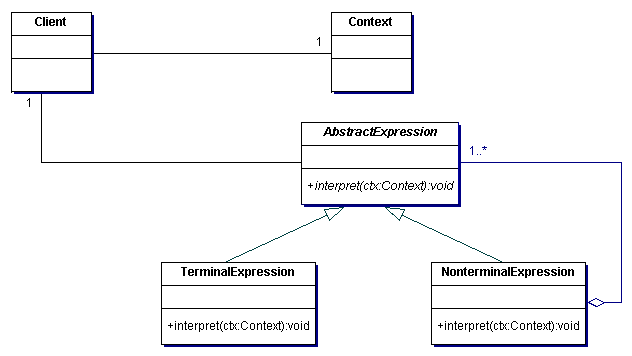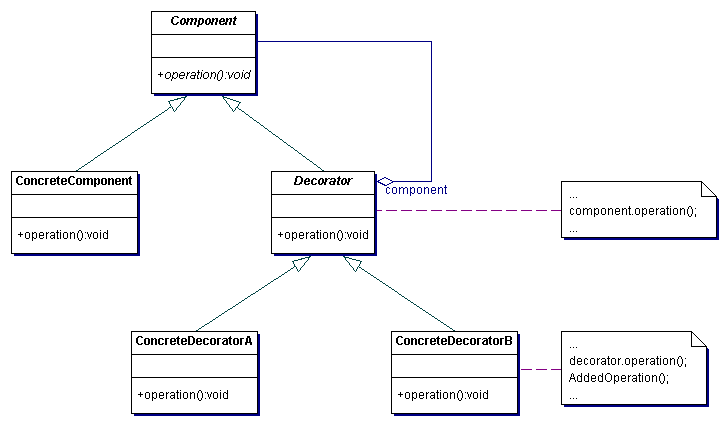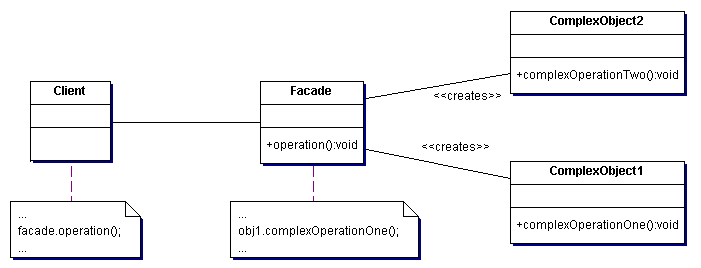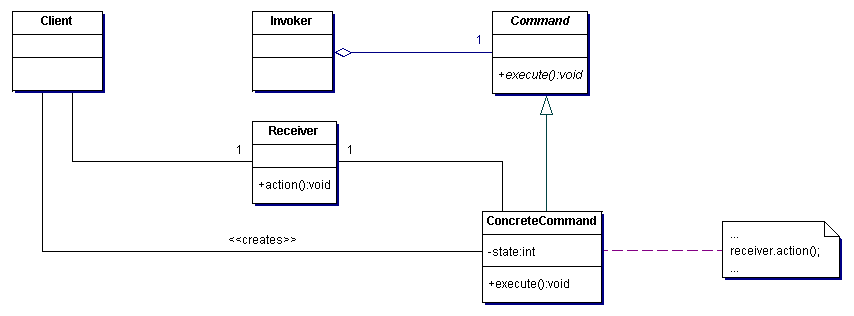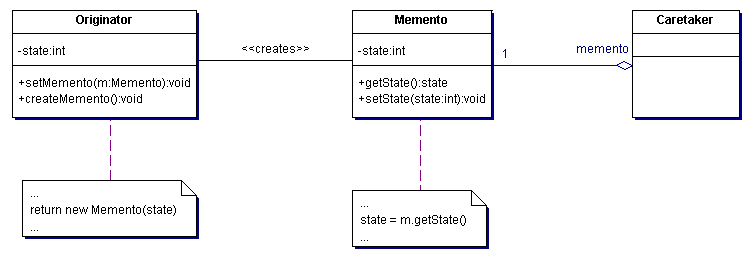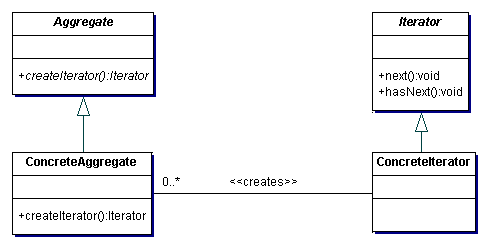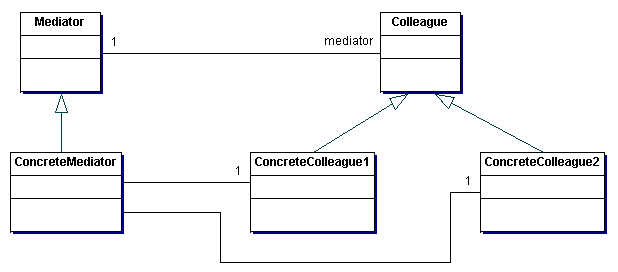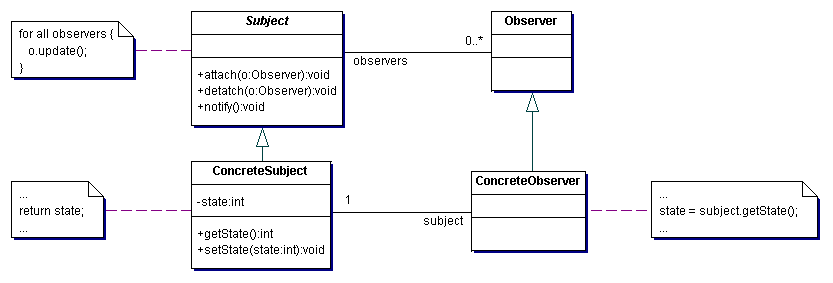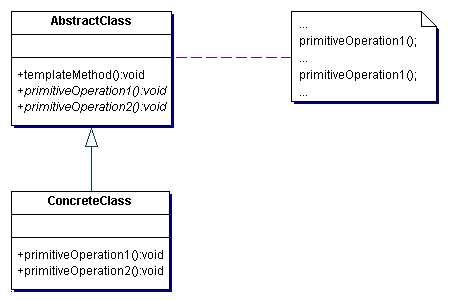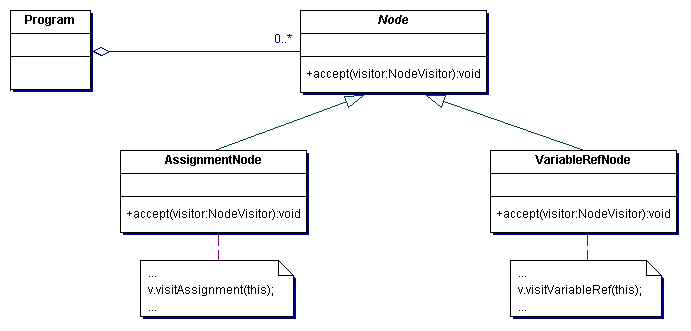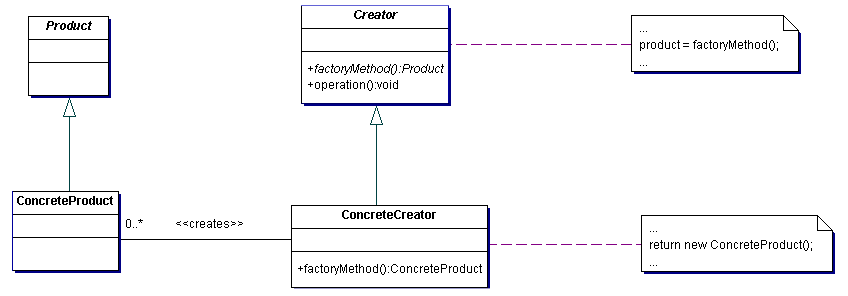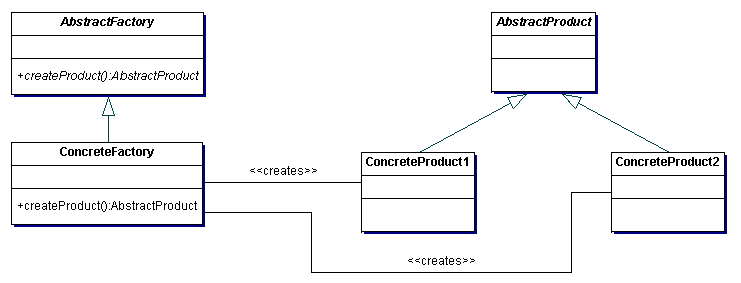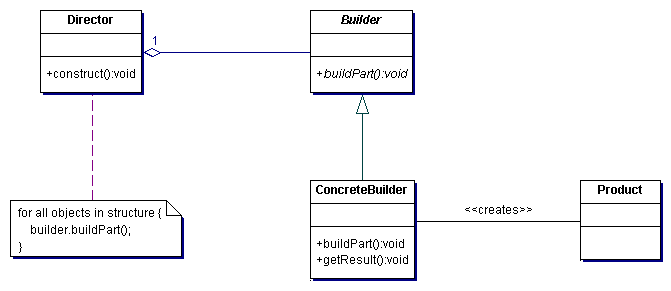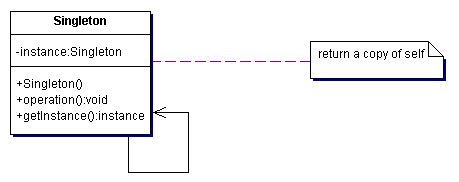Design Class Diagrams
Originally from www.javacoder.net*
Strategy
"Strategy, State, Bridge (and to some degree Adapter) have
similar solution structures. They all share elements of the "handle/body" idiom.
They differ in intent - that is, they solve different problems." [Coplien,
Advanced C++, p58]
Most of the GoF patterns exercise the two levels of indirection demonstrated
here.
- Promote the "interface" of a method to an abstract base class or
interface, and bury the many possible implementation choices in concrete
derived classes.
- Hide the implementation hierarchy behind a "wrapper" class that can
perform responsibilities like: choosing the best implementation, caching,
state management, remote access.
State
"Strategy is a bind-once pattern, whereas State is more dynamic."
[Coplien, C++ Report, Mar96, p88]
Bridge
The structure of State and Bridge are identical (except that
Bridge admits hierarchies of envelope classes, whereas State allows only one).
The two patterns use the same structure to solve different problems: State
allows an object's behavior to change along with its state, while Bridge's
intent is to decouple an abstraction from its implementation so that the two can
vary independently. [Coplien, C++ Report, May 95, p58]
Composite
Three GoF patterns rely on recursive composition: Composite,
Decorator, and Chain of Responsibility.
Flyweight
Flyweight is often combined with Composite to implement shared
leaf nodes. [GoF, p206]
Flyweight shows how to make lots of little objects. Facade shows how to make
a single object represent an entire subsystem. [GoF, p138]
This diagram is perhaps a better example of Composite than the Composite
diagram.
Interpreter
Interpreter is really an application of Composite.
Decorator
Decorator is designed to let you add responsibilities to
objects without subclassing. Composite's focus is not on embellishment but on
representation. These intents are distinct but complementary. Consequently,
Composite and Decorator are often used in concert. [GoF, p220]
Chain of Responsibility
Chain of Responsibility, Command, Mediator, and
Observer, address how you can decouple senders and receivers, but with different
trade-offs. Chain of Responsibility passes a sender request along a chain of
potential receivers.
Facade
Facade defines a new interface, whereas Adapter uses an old
interface. Remember that Adapter makes two existing interfaces work together as
opposed to defining an entirely new one. [GoF, p219]
Adapter
Adapter makes things work after they're designed; Bridge makes
them work before they are. [GoF, p219]
Bridge is designed up-front to let the abstraction and the implementation
vary independently. Adapter is retrofitted to make unrelated classes work
together. [GoF, 216]
Proxy
Decorator and Proxy have different purposes but similar
structures. Both describe how to provide a level of indirection to another
object, and the implementations keep a reference to the object to which they
forward requests. [GoF, p220]
Adapter provides a different interface to its subject. Proxy provides the
same interface. Decorator provides an enhanced interface. [GoF. p216]
Command
Command and Memento act as magic tokens to be passed around and
invoked at a later time. In Command, the token represents a request; in Memento,
it represents the internal state of an object at a particular time. Polymorphism
is important to Command, but not to Memento because its interface is so narrow
that a memento can only be passed as a value. [GoF, p346]
Memento
Command can use Memento to maintain the state required for an
undo operation. [GoF, 242]
Iterator
Memento is often used in conjunction with Iterator. An Iterator
can use a Memento to capture the state of an iteration. The Iterator stores the
Memento internally. [GoF, p271]
Mediator
Mediator is similar to Facade in that it abstracts
functionality of existing classes. Mediator abstracts/centralizes arbitrary
communications between colleague objects. It routinely "adds value", and it is
known/referenced by the colleague objects. In contrast, Facade defines a simpler
interface to a subsystem, it doesn't add new functionality, and it is not known
by the subsystem classes. [GoF, p193]
Observer
Mediator and Observer are competing patterns. The difference
between them is that Observer distributes communication by introducing
"observer" and "subject" objects, whereas a Mediator object encapsulates the
communication between other objects. We've found it easier to make reusable
Observers and Subjects than to make reusable Mediators. [GoF, p346]
On the other hand, Mediator can leverage Observer for dynamically registering
colleagues and communicating with them. [GoF, p282]
Template Method
Template Method uses inheritance to vary part of an
algorithm. Strategy uses delegation to vary the entire algorithm. [GoF, p330]
Visitor
The Visitor pattern is the classic technique for recovering lost
type information without resorting to dynamic casts. [Vlissides, "Type
Laundering", C++ Report, Feb 97, p48]
Factory Method
Factory Methods are usually called within Template
Methods. [GoF, p116]
Often, designs start out using Factory Method (less complicated, more
customizable, subclasses proliferate) and evolve toward Abstract Factory,
Prototype, or Builder (more flexible, more complex) as the designer discovers
where more flexibility is needed. [GoF, p136]
Prototype
Factory Method: creation through inheritance. Prototype:
creation through delegation.
Abstract Factory
Abstract Factory classes are often implemented with
Factory Methods, but they can be implemented using Prototype. [GoF, p95]
Builder
Builder focuses on constructing a complex object step by step.
Abstract Factory emphasizes a family of product objects (either simple or
complex). Builder returns the product as a final step, but as far as the
Abstract Factory is concerned, the product gets returned immediately. [GoF,
p105]
Singleton
Singleton should be considered only if all three of the
following criteria are satisfied:
- Ownership of the single instance cannot be reasonably assigned
- Lazy initialization is desirable
- Global access is not otherwise provided for
* Original source is not an active link anymore. As of 3/30/07, these figures or their successors are
posted at
http://home.earthlink.net/~huston2/dp/all_uml.html.




